Monumental urban implantation of the olympic village and stadiums. Not really an example of democratic urbanism, but they sure get the job done in a very organized way.
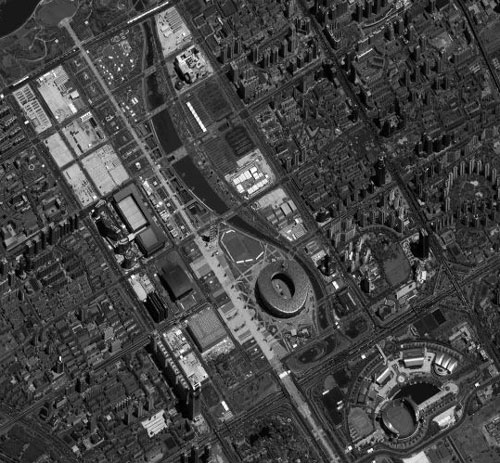
Monumental urban implantation of the olympic village and stadiums. Not really an example of democratic urbanism, but they sure get the job done in a very organized way.


Under the Viaduto do Café in central São Paulo a box academy operates since 2006. The project, initiative of ex boxer Nilson Garrido, started under a gallery in the Anhangabaú valley in 2005. When the municipality reclaimed the space a new spot was found under the flyover. The complex started off with used materials such as car parts to equip the academy, at a later stage it received donations of professional fitness gear.
Fábio Garrido, Nilson´s father, says in an interview with Estado de São Paulo that when Rocky Balboa started in the 70ties, he must have copied Garrido´s idea, because he was already setting up his informal academies in Brazil.
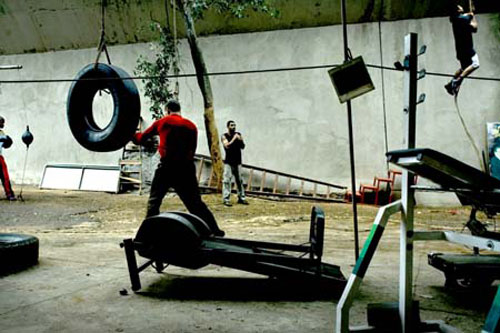
Besides box trainings and competitions, the project serves free meals for the homeless and maintains a public library of donated books. At first the neighborhood was divided about the box ring at the crossing that was used as illegal parking lot at the time, but later the initiative became fully accepted. In 2007 a photograph of the academy won World Press Photo in the category Sport Features and Stories.
Due to the succes of the project the district of Mooca offered another flyover, Alcântara Machado, to implement public sports facilities.
In 2008 architect Igor Guatelli developed an project to improve the academy under Viaduto do Café, which is currently under construction, and at the same time uses the experience for his Phd thesis.

See also:
Video by Gilberto Dimenstein (portuguese)
www1.folha.uol.com.br/folha/videocasts/…
Academia de boxe debaixo do viaduto (portuguese)
Article by Aryane Cararo for Estado de S. Paulo
www.estado.com.br/suplementos/…
Jogo de cintura (portuguese)
Article by Eugênio dos Santos for Portal SESC SP
www.sescsp.org.br/sesc/revistas_sesc/…
Interview with Igor Guatelli (portuguese)
www.vitruvius.com.br/entrevista/guatelli/…
Exibir mapa ampliado
Urban farming and big scale high productivity agriculture are not necessarily incompatible. Although the grassroot organizations, mentioned in the post below, would probably never suggest something of the sort, vertical farms also present a solution to our future problems regarding food production. On various levels, on top of and in between housing and offices, livestock could be kept and crops grown. A new type of hybrid infrastructural building has been conceived to accomodate this new urban rural function.
La Tour Vivante – Rennes, France, 2005. Atelier SoA architectes.
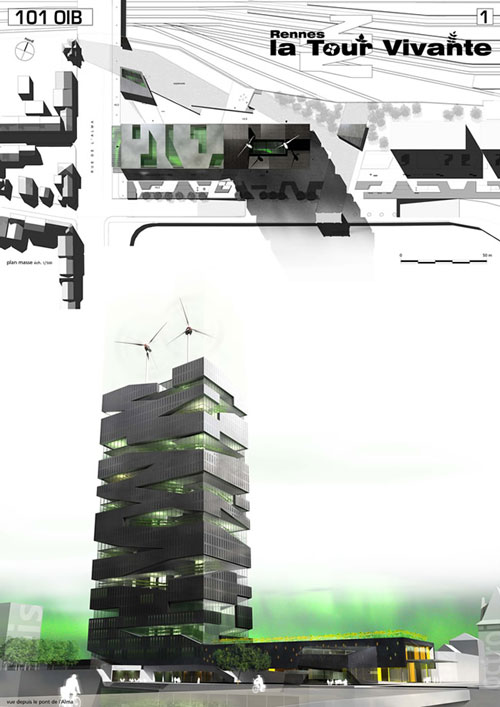
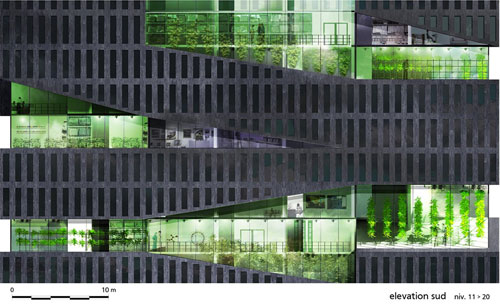
SoA architectes
www.ateliersoa.fr
Pig City -The Netherlands, 2001. MVRDV architects.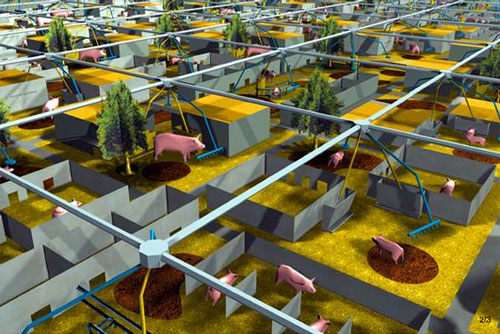
MVRDV architects
www.mvrdv.nl/_v2/projects/181_pigcity/index.html
More projects for vertical farms:
www.verticalfarm.com/Designs.aspx
Urban farming is more and more part of daily life of city dwellers in the US and (especially Eastern) Europe. Growing vegetables and lifestock in high density urban areas might seem as something strange, but according to various articles the practice of urban farming and the presence of “rural” animals in cities has always existed. In the past it has been necessary as survival strategy, for example during the urban famine at the end of the second World War.
Corn field in downtown Detroit
Today urban farming rises as an alternative for expensive, energy-consuming, processed and imported nutrients. Home growing increases control on the quality of the food and eliminates most of the transport costs. In Africa and other developing regions it´s creating independence for the urban poor. Besides these practical reasons, urban farming has been undertaken as revitalization strategies for abandoned urban sites, such as in Detroit. The resulting urban farms serve also as educational and recreational centers for the neighborhood. Exactly for being high density urban areas, these neighborhoods rarely have any legal restrictions on the growing of certain plants and keeping of unusual animals, which makes urban farms easy to be implemented.
Urban farming in Havana, Cuba
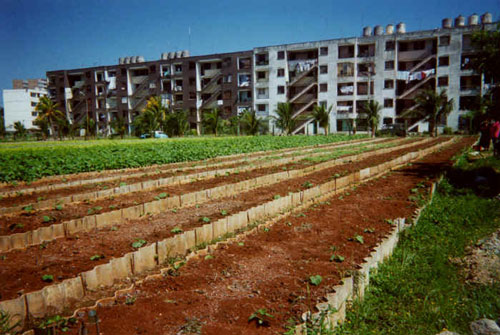
Articles:
Urban Farming: Back to the land in your tiny backyard
Carol Lloyd, San Fransisco Chronicle, 27 June 2008
www.sfgate.com/…
Designs of the time 2007 – Urban Farming
www.dott07.com/go/urbanfarming
Urban farming takes root in Detroit
Matthew Wells, BBC News, Detroit, 10 July 2008
http://news.bbc.co.uk/…
The Dutch “New Map” joins planning information of all municipalities in the Netherlands and gives a rather good idea of what the country will look like 10 years from now. Another project, called “The Old Map of the Netherlands”, gathered information on vacant lots and buildings.
When these two maps are put together, one finds that most vacant spaces are actually located outside the new development of housing, offices, commerce and leisure. This means that the potential of vacant space remains unused in Dutch urban planning. It also means there is still a bright future for squatting movements, just pick up the list and go…
Nirov Quickscan for the city Utrecht (searching for overlaps in the two maps, vacancy and urban development). Manon van Heusden en Jan Kadijk 23-06-08

Nirov Quickscan
www.nirov.nl/static/nieuws/Quickscan_OudeKaart_NieuweKaart.pdf
Nieuwe Kaart van Nederland (New Map of the Netherlands – new planning developments)
www.nieuwekaart.nl
Oude Kaart van Nederland (Old Map of the Netherlands – vacancy and possibilities for reuse)
www.oudekaartnederland.nl/okn.html